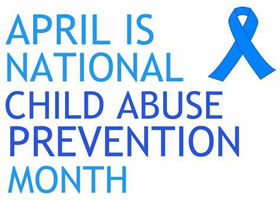Child abuse is intentional harm or mistreatment to a child under 18 years of age. There are multiple forms of abuse, and they often occur at the same time.
- Physical abuse.When a child is purposely physically injured or put at risk of harm by another person.
- Sexual abuse.Any sexual activity with a child. This can involve sexual contact, such as sexual touching, oral-genital contact or intercourse. It can also involve noncontact sexual abuse of a child which would include exposing a child to sexual activity or pornography; observing or filming a child in a sexual manner; sexual harassment of a child; or prostitution of a child, including sex trafficking.
- Emotional abuse.Injuring a child’s self-esteem or emotional well-being. It includes verbal and emotional assault like continually belittling or berating a child or isolating, ignoring or rejecting a child.
- Medical abuse.When someone gives false information about illness of a child that requires medical attention, putting the child at risk of injury and unnecessary medical care.
- Failure to provide adequate food, clothing, shelter, clean living conditions, affection, supervision, education or dental or medical care.
Abuse is often perpetrated by someone the child knows and trusts such as a parent or other relative.
Symptoms
An abused child may feel guilty or confused. They may be afraid to tell anyone, especially if the abuser is a parent, other relative or family friend. That’s why it’s vital to watch for these red flags:
- Withdrawal from friends or usual activities
- Changes in behavior — such as defiance, rebellion, aggression, anger, hostility or hyperactivity
- Changes in school performance or frequent absences from school
- Depression, anxiety or unusual fears or a sudden loss of self-confidence
- Sleep problems and nightmares
- An apparent lack of supervision
- Self-harm or suicide attempts
Specific signs and symptoms depend on the type of abuse and can vary. The presence of warning signs doesn’t necessarily mean that a child is being abused.
Physical abuse signs and symptoms
- Unexplained injuries like bruises, broken bones (fractures) or burns
- Injuries that don’t match the given explanation
- Injuries that aren’t compatible with the child’s developmental ability
Sexual abuse signs and symptoms
- Sexual behavior or knowledge that’s inappropriate for the child’s age
- Pregnancy or a sexually transmitted infection
- Genital or anal pain, bleeding or injury
- Statements by the child that he or she was sexually abused
- Inappropriate sexual behavior with other children
Emotional abuse signs and symptoms
- Delayed or inappropriate emotional development
- Loss of self-confidence or self-esteem
- Social withdrawal or a loss of interest or enthusiasm
- Depression
- Avoidance of certain situations, such as refusing to go to school or ride the bus
- Appears to desperately seek affection
- A decrease in school performance or loss of interest in school
- Loss of previously acquired developmental skills
Neglect signs and symptoms
- Poor growth
- Excessive medical complications that are not being adequately addressed
- Poor personal cleanliness
- Lack of clothing or supplies to meet physical needs
- Hoarding or stealing food
- Poor record of school attendance
- Lack of appropriate attention for medical, dental or psychological problems
When to see a doctor
If you’re concerned that your child or another child has been abused, seek help immediately. Depending on the situation, contact the child’s health care provider, a local child welfare agency, the police department or a 24-hour hotline for advice. In the U.S., information and assistance by are available if you call or text the Childhelp National Child Abuse Hotline at 1-800-422-4453.
If the child needs immediate medical attention, call 911 or your local emergency number.
Keep in mind that health care professionals and others such as teachers and social workers, are legally required to report all suspected cases of child abuse.
Complications
Some children overcome the effects of child abuse. However, for others, abuse may result in physical, behavioral, emotional or mental health issues — even years later. Here are some examples:
Physical issues
- Premature death
- Physical and/or learning disabilities
- Substance abuse
- Health problems like heart disease, diabetes, chronic lung disease and cancer
Behavioral issues
- Illegal or violent behavior or abuse of others
- Withdrawal
- Suicide attempts or self-injury
- High-risk sexual behaviors or teen pregnancy
- Problems in school
- Limited social and relationship skills
- Problems with work or staying employed
Emotional issues
- Low self-esteem
- Difficulty with relationships
- Challenges with intimacy and trust
- An unhealthy view of parenthood
- Inability to cope with stress and frustrations
- An acceptance that violence is a normal part of relationships
Mental health disorders
- Eating disorders
- Personality and/or behavior disorders
- Depression, anxiety disorders
- Post-traumatic stress disorder (PTSD)
- Trouble sleeping and nightmares
- Attachment disorders
Information source: www.mayoclinic.org/diseases-conditions/child-abuse


